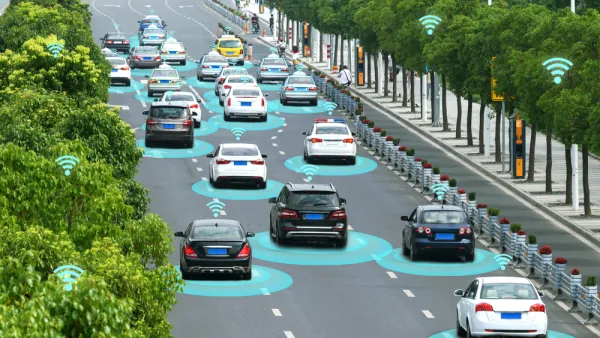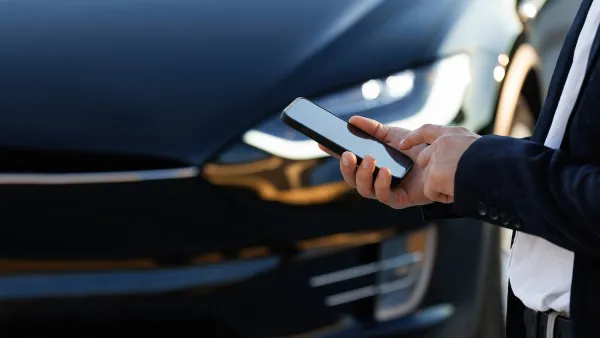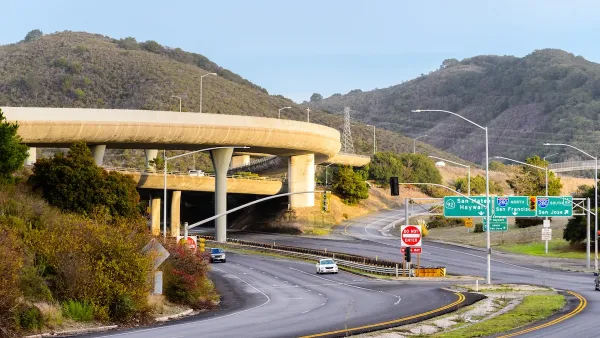While we're still far from a Jetsons-style reality, understated autonomous features could be the key to safer transportation.

With billions of dollars invested in autonomous vehicles and federal policy undergoing revision to accommodate them, Allison Arieff, writing in City Monitor, takes stock of the industry and its actual achievements and potential.
Arieff starts with the basic questions about the role of autonomous vehicles in our lives. "What problem are they going to solve? Is the goal to end car ownership? Kill public transit? Rescue public transit? Normalise super-commutes? Eliminate the need for parking lots?" With 2020 making every industry reevaluate its priorities, AV developers and investors are shifting the discussion to focus on the realistic ways that autonomous vehicles can craft their niche, looking at avenues such as "buses, transit and last-mile goods delivery."
Whereas autonomous cars once promised safety as a top feature, the advances being implemented in human-driven cars have the potential to make that advantage obsolete. "By 2022, just about every new vehicle sold in the world’s wealthy nations will have at least automatic emergency braking, which is expected to reduce injury-related crashes by 56% and reduce rear-end crashes by half." And, Arieff argues, "too much focus on tech that may or may not be as deployable or as transformative runs the risk of crowding out more important transportation conversations about low-hanging fruit like reduced speed limits, road diets and congestion pricing."
Autonomous vehicles seek to separate the driver from the driving, but they're not out to remove them from the car altogether. "Startups are focusing on what you can be doing during your trip, whether in an AV or on mass transit," but not on reducing the number of cars on the road. "Instead of exploring more effective solutions that could carry more people from one destination to the next, the driverless vehicle, by definition, keeps the car as the number one choice for getting from A to B."
Recent changes, however, point to a renewed focus on integration with transit, last-mile solutions, and goods movement. "The integration of AV technology into public transport networks and delivery systems presents new opportunities to develop multimodal systems for equitable, accessible and sustainable urban mobility." As Arieff writes, the future of autonomous vehicles may not be flying taxis, but safer and more reliable buses—and that's not a bad thing.
FULL STORY: The underwhelming reality of driverless cars

Analysis: Cybertruck Fatality Rate Far Exceeds That of Ford Pinto
The Tesla Cybertruck was recalled seven times last year.

National Parks Layoffs Will Cause Communities to Lose Billions
Thousands of essential park workers were laid off this week, just before the busy spring break season.

Retro-silient?: America’s First “Eco-burb,” The Woodlands Turns 50
A master-planned community north of Houston offers lessons on green infrastructure and resilient design, but falls short of its founder’s lofty affordability and walkability goals.

Test News Post 1
This is a summary

Analysis: Cybertruck Fatality Rate Far Exceeds That of Ford Pinto
The Tesla Cybertruck was recalled seven times last year.

Test News Headline 46
Test for the image on the front page.
Urban Design for Planners 1: Software Tools
This six-course series explores essential urban design concepts using open source software and equips planners with the tools they need to participate fully in the urban design process.
Planning for Universal Design
Learn the tools for implementing Universal Design in planning regulations.
EMC Planning Group, Inc.
Planetizen
Planetizen
Mpact (formerly Rail~Volution)
Great Falls Development Authority, Inc.
HUDs Office of Policy Development and Research
NYU Wagner Graduate School of Public Service




























